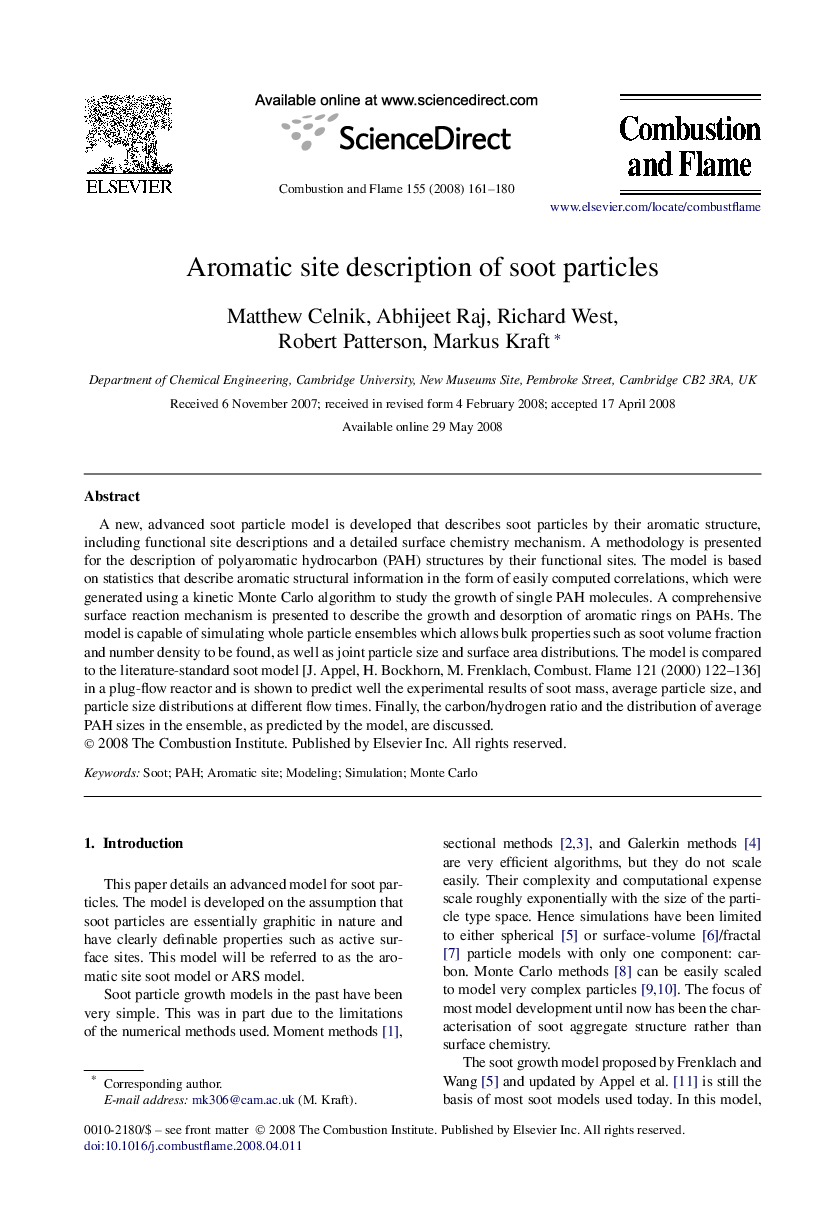| Article ID | Journal | Published Year | Pages | File Type |
|---|---|---|---|---|
| 169526 | Combustion and Flame | 2008 | 20 Pages |
A new, advanced soot particle model is developed that describes soot particles by their aromatic structure, including functional site descriptions and a detailed surface chemistry mechanism. A methodology is presented for the description of polyaromatic hydrocarbon (PAH) structures by their functional sites. The model is based on statistics that describe aromatic structural information in the form of easily computed correlations, which were generated using a kinetic Monte Carlo algorithm to study the growth of single PAH molecules. A comprehensive surface reaction mechanism is presented to describe the growth and desorption of aromatic rings on PAHs. The model is capable of simulating whole particle ensembles which allows bulk properties such as soot volume fraction and number density to be found, as well as joint particle size and surface area distributions. The model is compared to the literature-standard soot model [J. Appel, H. Bockhorn, M. Frenklach, Combust. Flame 121 (2000) 122–136] in a plug-flow reactor and is shown to predict well the experimental results of soot mass, average particle size, and particle size distributions at different flow times. Finally, the carbon/hydrogen ratio and the distribution of average PAH sizes in the ensemble, as predicted by the model, are discussed.
